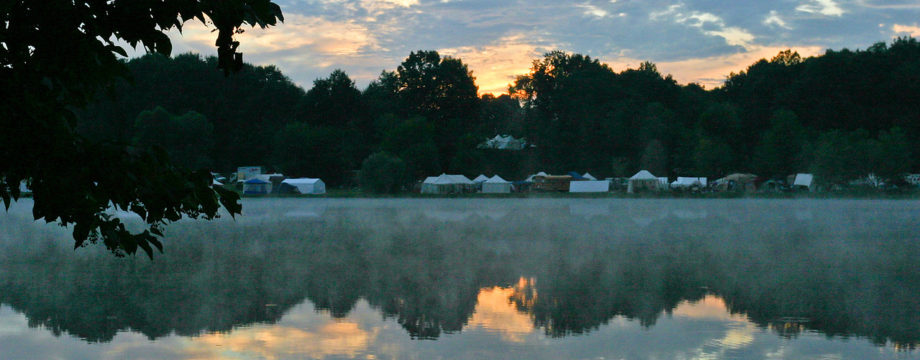I received several responses to my post which I have cross-posted on a few of my regular forums. The responses have been varied on how to achieve the look of vair from a labor intensive two-tone fur sewing project to a felting method. While I have gotten a number of ideas I had to share this particular image to the right.

Vair Cloak Belonging to Ian Uzzell, Regia of UK
This particular example comes from Ian Uzzell, Regia from the UK, by way of a response to my post on a forum. The snippit below is from the owner of the cloak himself:
“Hazel has now finished my 12th C tunic and cloak. The cloak is lined with vair – which is the belly fur of squirrels. Manuscripts show several cloaks so lined.The tunic is full length is heavily
embroidered at the neck and has wide lined sleeves.”
The skins were gotten from the House of de Clifford, professional furriers.
Ian notes:
“I quote from the supplier: This squirrel blanket/ plate is made from Baltic winter squirrel necks. it measures 28″w x 44″d This pattern is often used in heraldry and seen in medieval paintings. Squirrel was called ‘vair’ and the white fur was called ‘miniver’ . This fur is one of the purest softest furs in the world. The fur trade in Britain was started through the trade in Grey Squirrel pelts across the Hansiatic trade routes, and was probably bought in Novgorod, Russia. Grey squirrels not being native to the UK in medival times and only having red squirrels we wanted something ifferent!!!”
I myself am not a fan of using real fur unless I happen to be able to re-purpose an old fur coat that is still in good condition.This is why I am trying to find a way to make it instead of buying a piece from a furrier. That and it is just far too expensive for regular wear! Though I do have to admit that I am jealous of such a beautiful piece of work!

